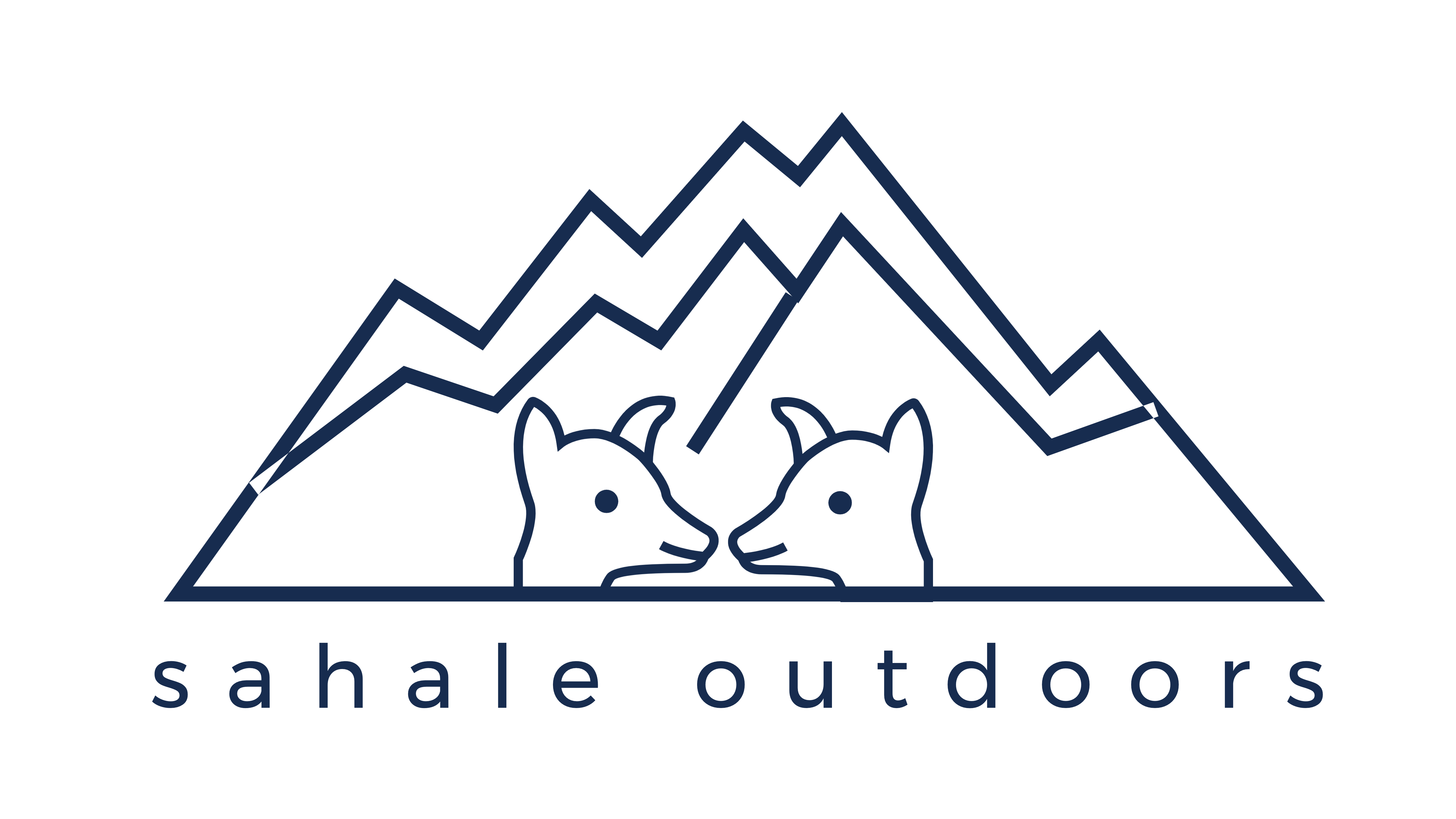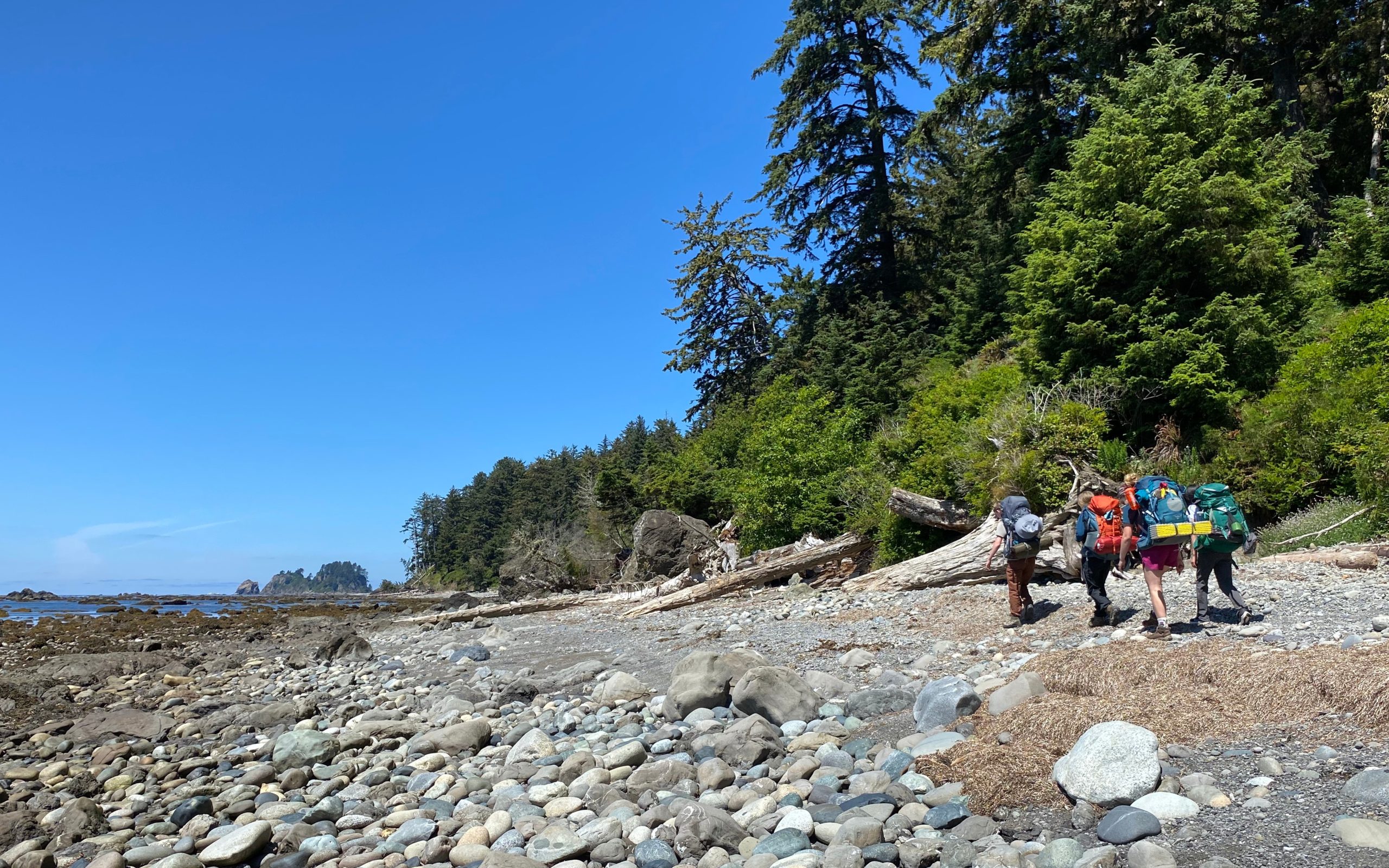
Ozette Triangle Middle School
Olympic National Park: Ozette Triangle
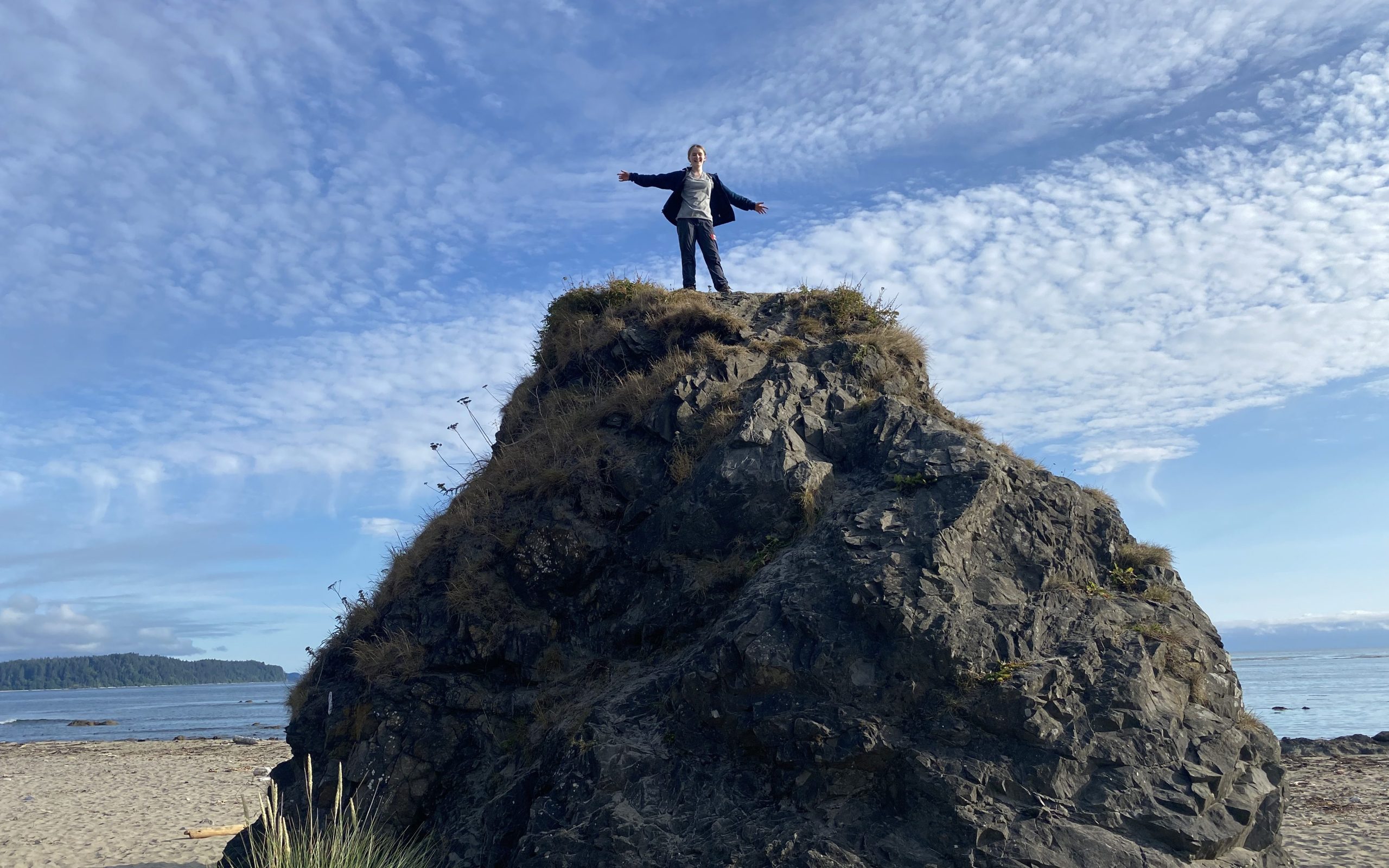
Trip Details
Navigate the rugged coastal rocks, explore tide-pools brimming with life, see petroglyphs, and learn about this area’s rich indigenous history on the Ozette section of the Olympic Coast. The variety of terrain keeps it interesting, whether you’re climbing overland or scrambling around a head at low tide. Olympic National Park offers a wide variety of plant and animal life, including the starfish, seals, and seabirds that make their homes in and along the Pacific Ocean. Embrace the thrill of exploration and discovery on this four-night adventure on the Olympic Coast. This trip includes a visit to the Makah Museum in Neah Bay. The museum interprets and houses 300-500 year old artifacts recovered from the Ozette Archeological Site, just north of Cape Alava, one of the route’s camping locations.
We provide all needed gear, including boots and clothing if notified 4 weeks ahead of time. Food from lunch on the first day to lunch on the last day is provided, and we will send you a menu and food options form to fill out before your trip. Transportation is provided from the meet location in Edgewood.
Gear Provided
- Tent
- Backcountry sleeping pad
- Multi-day backpack
- Sleeping bag
- All meals from lunch the first day through lunch on the last day
- All entrance fees, permits and passes
- First-aid kit and satellite phone
- Group kitchen and food service gear
- Water bottles
Learning Goals
- Leave no trace
- Gear management
- Plant and wildlife identification
- Basic backpacking skills such as cooking, campfires, filtering water, first-aid
- Map reading
- Local geography
- Cultural history
Documents
- Packing Checklist
- How to Not Overpack A guide to packing for your backpacking trip, with what to bring, what not to bring, and how to be prepared for gear malfunctions while still packing light.
- Pooping in the Woods What to expect.
- Periods in the Backcountry What to bring and how to plan when backpacking on your period.
- Backpacking and Binding Strategies for backpacking if you will be wearing a binder.


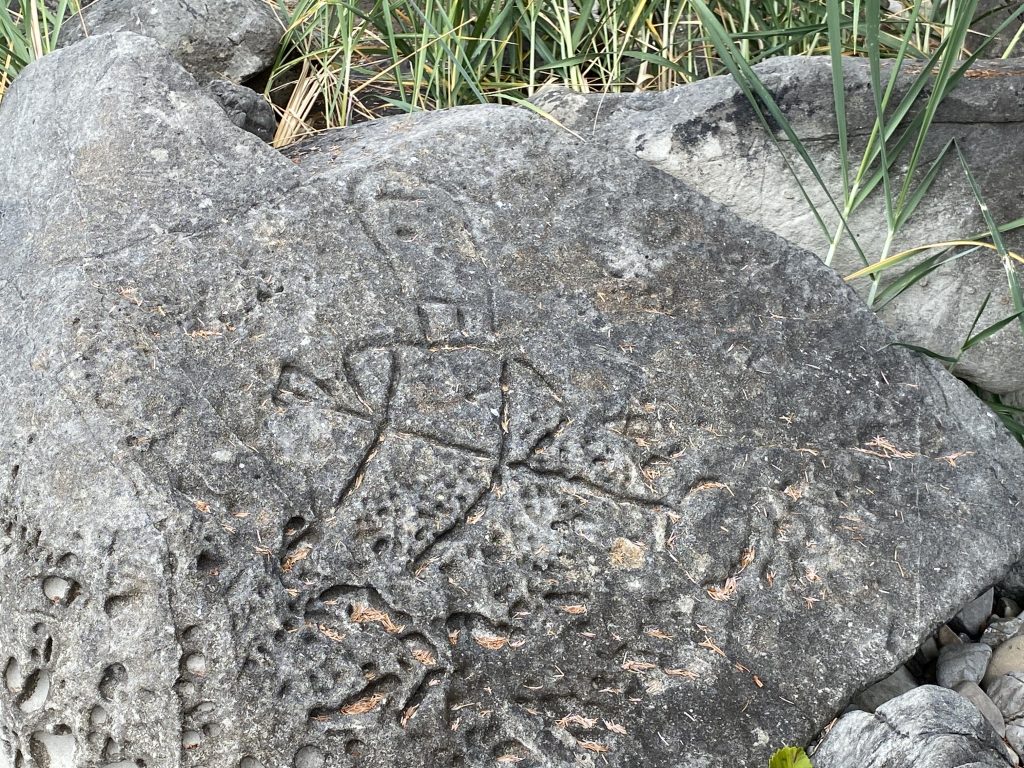
What To Expect
Orientation
All our trips start with an orientation process during which our guides check participant’s gear, go over the schedule and itinerary for the trip, and help participants pack their backpacks. We complete this orientation regardless of experience level. During the orientation, all participants will have the option to borrow Sahale Outdoors gear, even if they brought their own backpack, sleeping bag, mess kit, etc. The orientation process usually takes 1-2 hours.
Day 1: Museum and Campground
On the first day, we will head to Neah Bay and visit the Makah Research and Cultural Center, home of the Makah museum owned and operated by the Makah Nation. After the museum visit, we camp at a front country campground near the trailhead. The first night, there will be access to a bathroom (sometimes with running water) and the vehicle.
Day 2-5: Backpacking
Our tentatively planned route is as follows, although campsite order and water taxi ride may vary depending on the available permits for camping locations. The guides will lead the group at a beginner’s pace, with rests as needed.
Day 2: Backpack 3 miles to first camp
Day 3: Day hike (leave backpacks at camp) 3-6 miles along coastline.
Day 4: Backpack 3 miles to second camp.
Day 5: Backpack 3 miles back to trailhead
Returning home
The last day of the trip will consist of hiking out to the vehicle and driving back to base. It’s difficult to predict the exact timeline due to group speed and traffic. In general, we try to get back to our base in Fife around 4-5 PM.
Difficulty Level
Intermediate: Minimal elevation gain and loss, 9-15 miles over four days, boardwalk and wide trails in the forest, challenging footing over sand, boulders, and logs along the beach sections.
Length
Five days
2026 Middle School Schedule
August 17-21
Price: $900 per person
Includes gear rental, food, transportation, and all entrance fees, permits, and passes.
25% of the total trip cost is due at sign-up, with the remainder due one month before the trip date. You are welcome to pay in installments, contact trips@sahaleoutdoors.org to set up a payment plan.
Our mission is to make outdoor recreation accessible to all. If you cannot afford the total trip cost, request sliding scale pricing here:
Book Your Trip
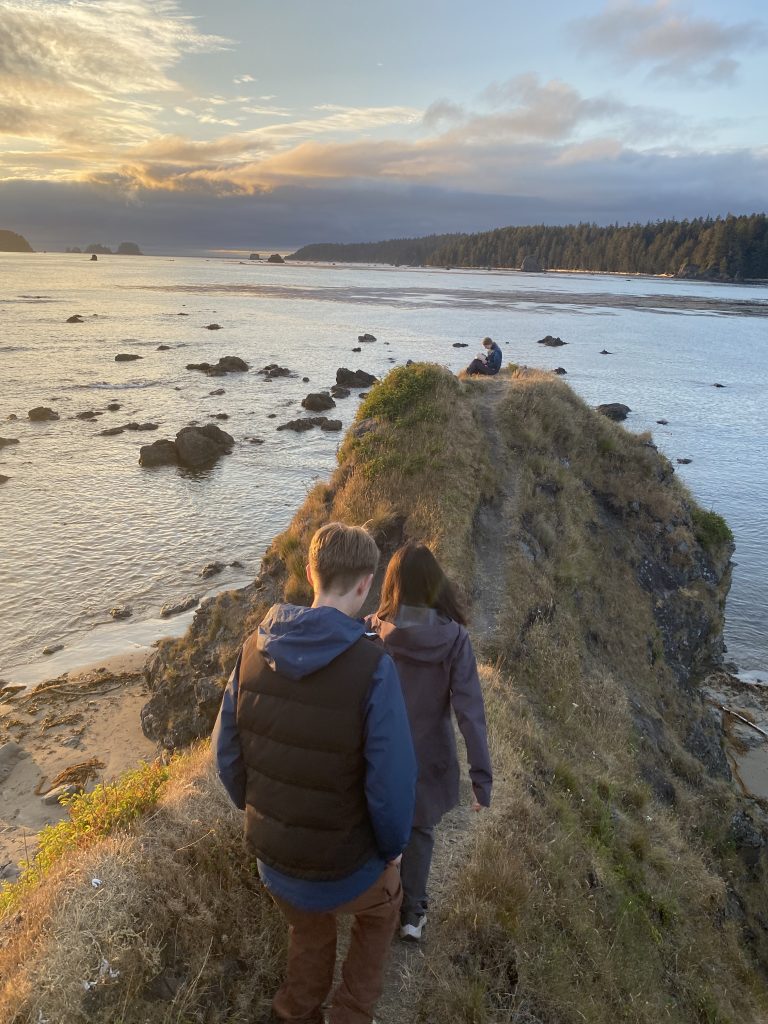
Indigenous Land
Makah
“On the brink of extinction, drums and hearts still beating!
~John Pritchard III, Makah slam poet
. . . telling me not to speak my language
well we’re still speaking
don’t sing my songs
well we’re still singing
telling me it’s illegal to dance
well we’re still keeping it moving”
Historically, the Makah were highly skilled mariners, using sophisticated navigational and maritime skills. They carved canoes from western red cedar and used them for a myriad of purposes. There were war, whaling, halibut, salmon fishing, sealing canoes and large cargo canoes. There were even smaller canoes which children used for practice. The canoes had sails so that paddlers could use the wind to their advantage. When they landed, it was done stern first so that, if necessary, the paddlers could make a quick exit. The canoes and their contents were never disturbed as the Makah were taught from an early age to respect the belongings of others. The Makah were tireless paddlers and traveled great distances to obtain food or trade their wealth. Today, the Makah maintain their traditions of traveling by canoe.
The tradition of whaling is a source of great pride among the Makah. Whales were hunted for their meat and blubber, and nearly every part of the whale was designated for use. Humpback, right, sperm, gray, fin and blue whales were among the species traditionally hunted by the Makah. Oil rendered from the whale’s blubber was a valuable commodity, earning whaling families great wealth. The bones of the whale were useful for making combs, spindle whorls, war clubs, bark pounders, shredders and personal adornments. The Makah work with NOAA Fisheries to maintain their treaty rights of whaling in Neah Bay while still following marine mammal regulations. “The Makah people have an enduring relationship with the sea and all marine creatures, but that connection is especially strong with whales, which are central to our identity as a people.” (Patrick DePoe)
~ This information found on Makah.com
